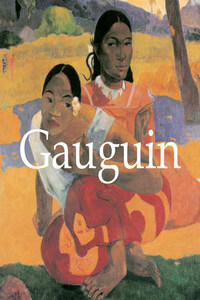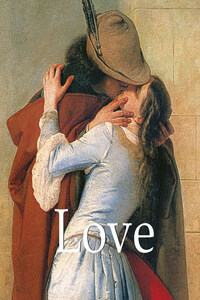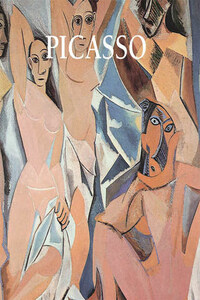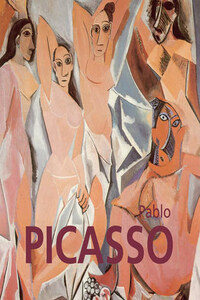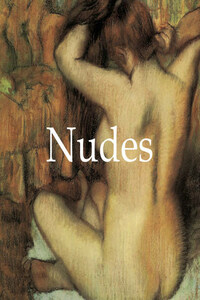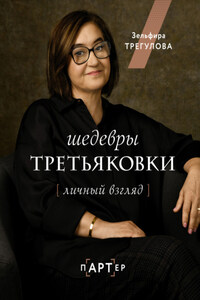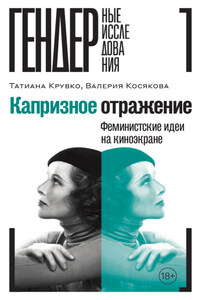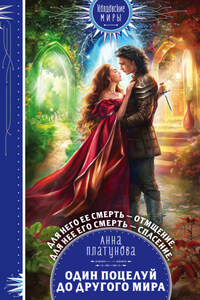Self-Portrait with a Palette, c. 1894
Oil on canvas, 92 × 73 cm
Private Collection
1848: Paul Gauguin born in Paris, on June 7.
1849: The family left France for Peru; his father died at sea.
1855–1861: Returned to France after a five-year stay in Lima. Lived in Orleans, his father’s native town. Studied at the Petit Seminaire.
1861(?)–1865: Moved with his mother to Paris. Attended high school.
1865: Entered the merchant marine as a cabin-boy.
1868–1871: Served in the navy after the disbandment of the French army and navy settled in Paris.
1871–1873: Worked as a stockbrocker in the banking office of Bertin. In the house of his sister’s guardian, Gustave Arosa, began to take interest in art. Became acquainted with Camille Pissarro and Emile Schuffenecker. First amateur efforts at painting.
1873–1875: Married Mette Sophie Gad, a Dane from Copenhagen. Attended the Atelier Colarossi, acquired a collection of Impressionist pictures. The Seine by the Pont d’Iena.
1876: Exhibited a landscape at the official Salon.
1877: Took lessons from the sculptor Jules Ernest Bouillot and produced his first sculptures.
1880: Exhibited in the 5th Impressionist exhibition (seven paintings and a marble bust).
1881: Participated in the 6th Impressionist exhibition (eight paintings and two sculptures). Spent the summer holidays in Pontoise with Pissarro who introduced him to Cézanne.
1882: Took part in the 7th Impressionist exhibition (twelve oils and pastels, one sculpture).
1883: Resigned from his job at Bertin’s and devoted himself entirely to painting with Pissarro at Osny, where he spent his holidays studying.
1884–1885: Moved with his family first to Rouen, and then to Copenhagen, where he executed a number of paintings and wooden sculptures. Displayed interest in the Symbolist theories. Short show at the Society of the Friends of Art, Copenhagen. Left his wife and four children in the Danish capital and returned to Paris with his six-year-old son Clovis. Went to London for three weeks, later lived in Dieppe, where he made friends with Edgar Degas.
1886: Lived by turns in Pont-Aven (Brittany) and Paris; made ceramics at Ernest Chaplet’s workshop. Represented in the 8th Impressionist exhibition (nineteen paintings).
1887: In April, with Charles Laval, left for Panama, then moved to Martinique. Back in Paris in November, where he met Van Gogh. Organized his first one-man show at Boussod and Valadon, which included ceramics as well as Brittany and Martinique paintings. Became acquainted with Daniel de Monfreid.
1888: Lived at Pont-Aven. Produced pictures in his new synthetist and cloisonne manner. Gave ‘lessons’ in synthetic painting to Paul Sérusier. Painted The Vision after the Sermon, Wrestling Boys, Self-Portrait (with a profile of Bernard): “Les Misérables”, Fruit, etc. Stayed, from October to December, with Van Gogh at Arles, where he painted Café at Arles, The Alyscamps, Old Women of Arles and other works.
1889: Exhibited with his friends at the Café Volpini as ‘Groupe Impressionniste et Synthétiste’, where he showed seventeen of his paintings and a number of zincographs. Lived, alternatively, in Paris, Pont-Aven and Le Pouldu (Brittany). Painted Portrait of Meyer de Haan, The Yellow Christ, La Belle Angèle and The Schuffenecker Family. Carved the wooden relief Soyez amoureuses et vous serez heureuses (Be in love and you will be happy). Wrote two articles for the magazine Le Moderniste. Met Albert Aurier and Charles Morice. Frequented the Symbolist group at their meetings at the Café Voltaire.
1891: On February 23, auctioned thirty of his paintings at the Hotel Drouot. On April 4, left for Tahiti.
1891–1893: The first Tahitian period. He settled first in Papeete, then at Mataeia. During these years he produced over ninety paintings (eight of them are now divided between the Hermitage, St. Petersburg, and the Pushkin Museum of Fine Arts, Moscow). Sent a number of pictures for two exhibitions in Copenhagen, one held in March 1892 (thirteen canvases), and the other in March 1893 at the Society of Free Arts (about fifty works).
1893: Returned to France on August 30. In November arranged a show of his works at the Galerie Durand-Ruel (two sculptures and forty-four paintings, among them Landscape with Peacocks, Tahitian Pastoral Scene, Her Name is Vaïraumati, What! Are You Jealous? and At the Foot of a Mountain. Wrote Noa Noa and prepared a series of illustrations for it.
1894: Contributed to La Libre Esthétique exhibition in Brussels (January-February). Visited his family in Copenhagen. Lived alternatively in Paris and Brittany.
1895: On February 18, a sale of his works was held at the Hotel Drouot (forty-nine paintings, drawings and prints). On July 3, he sailed to Tahiti, leaving France for good.
1895–1901: The second Tahitian period. The output of these years amounted to more than sixty paintings, numerous drawings, watercolours, woodcuts and sculptures. Rewrote the manuscript of
